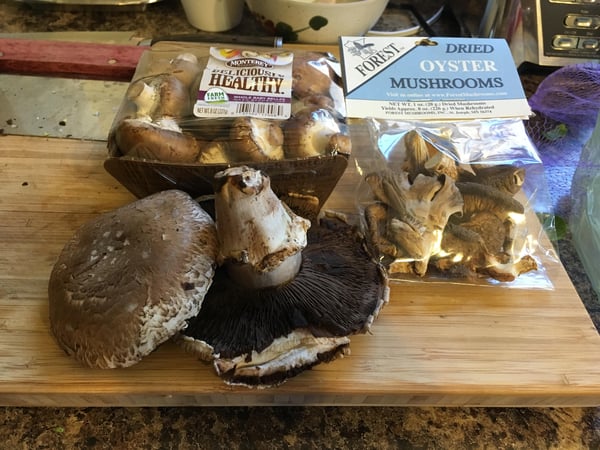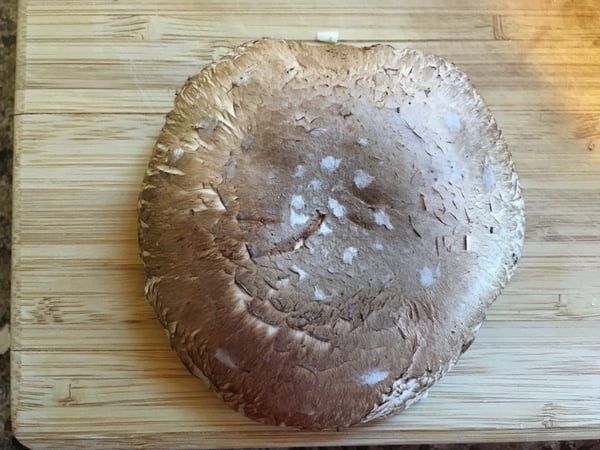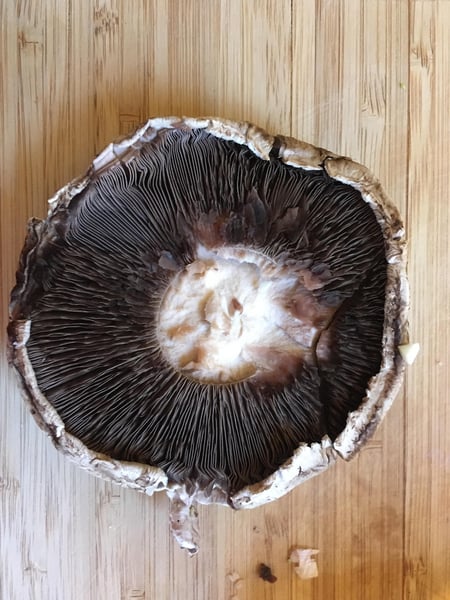"Yuck! Mushrooms!"
How many times have I heard that exclamation from the mouths of kids (and many of my beloved adult friends and family). If you are a mushroom hater, I understand you: the texture of mushrooms as well as their earthy-savory-something taste may have turned you against them, and there you may remain. But for all the fungi fanatics out there, this one's for you: a brief briefing on mushrooms and their ilk.

Not to be political, but I love mushrooms when cooked properly—and that means a toothsome texture (not rubbery and lifeless) and adequately seasoned. Nothing is worse than a bland, morose mushroom, mucking up the pizza or pointlessly existing on a pasta plate.
Mushroom Botany 101: A fun guy among us
"All mushrooms are fungi, but not all fungi are mushrooms"
-anonymous (aka the encyclopedia of life)
You may have heard people tell jokes about the poor mushroom not getting invited to the party, even though he was reputedly a "fun guy". I feel that constantly talking about mushrooms with such language only further disincentives mushroom shirkers from giving them a second chance. Do you really want to hear the word "fungi" as you are about to take a bite of lunch? I think not.
To paraphrase EOL, mushrooms function much like a fruit or flower on the main part of a plant. They are an offshoot that can be picked and harvested from the main underground-dwelling fungus or mycelium, analogous to the root system on a tree. Mushrooms are not a plant, as they lack chlorophyll.
 The gills of the mushroom help hold the spores; think of them as tiny shelves, which can hold millions and millions of spores (which can form new tiny fungi). They also help stabilize the cap of the mushroom. So now think of them as supports for the roof of a domed building. The stalk and cap of the mushroom are able to absorb a lot of water so that plant can live. This is why when mushrooms are cooked improperly they can absorb a lot of oil!
The gills of the mushroom help hold the spores; think of them as tiny shelves, which can hold millions and millions of spores (which can form new tiny fungi). They also help stabilize the cap of the mushroom. So now think of them as supports for the roof of a domed building. The stalk and cap of the mushroom are able to absorb a lot of water so that plant can live. This is why when mushrooms are cooked improperly they can absorb a lot of oil!
Mushrooms are as old as Father Time
European cultivation goes back to 1600. Cultivation and medicinal use in Asia precedes this by a margin.
The mushroom enigma: mushrooms as packaging
Because of its spongy texture, mushrooms form the basis for some pretty amazing biodegradable packaging, hopefully to soon push styrofoam out the door.
Mushrooms: high in glutamate, or umami flavor
Mushrooms are often subbed in for meat in vegetarian recipes because of their high concentration of glutamate, which we read as "umami". But don't think of these caps as substitutions, their deep, complex and super savory flavor is incomparable, and makes whatever dish they're in. Just don't try to pick them yourself unless you've done your research and are well-versed in morel mushroom hunting. You can even grow mushrooms yourself at home!
If you'd rather pick your mushrooms from your local farmers' market, The Chopping Block's Owner/Chef Shelley Young has a video on how to select them.
Once you've selected your mushrooms, here's how to cook them properly:
To learn more about the magic of mushrooms, check out our Ramen Workshop hands-on cooking class, which deals with the umami-superpowered shitakes. Learn to slice, dice and perfectly prepare mushrooms so as to never experience another sad mushroom again.













